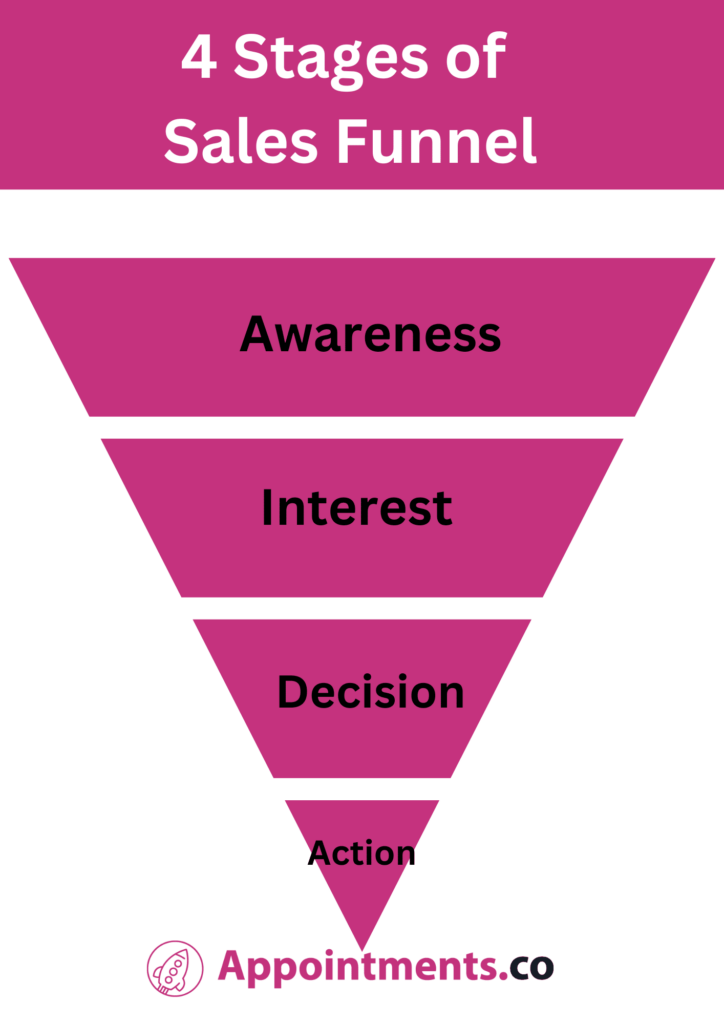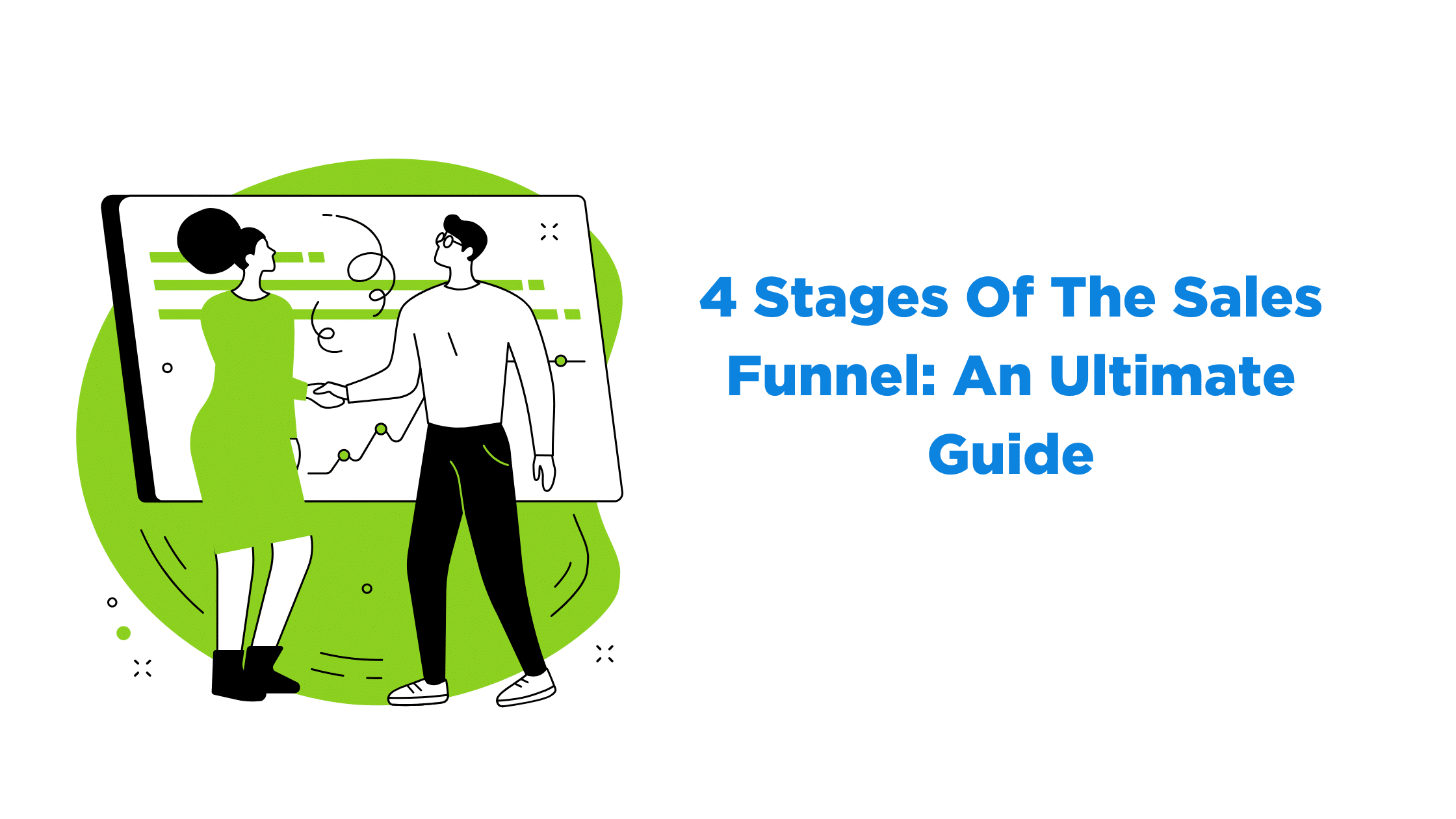Stages of the sales funnel represent the step-by-step progress of your audience to customers. Understanding their Sales funnels to be a set of marketing strategies that your business can use to improve the sales process. Some say they are complex, but they’re not. Small businesses and large corporations alike can use them. The most critical aspect of any funnel strategy is that you must have a clearly defined objective before you begin any activities.
Most business owners think of a stage of the sales funnel as a simple way to increase their leads, but in reality, it’s an extremely powerful tool to increase revenue and improve conversions. By properly planning the stages of the sales funnel, and structuring it around your ideal customer profile, you can effectively improve your lead generation.
What Is a Sales Funnel?
A sales funnel visually represents the customer journey and the closing rates for each marketing funnel stage. It’s a great way to understand where your audience is in the buying cycle, what’s working, and what needs improvement.
Since the beginning of modern marketing, one of the most important tools has been what’s known as the sales funnel. In the year 1898, E. St. Elmo Lewis was the one who came up with what is generally considered to be the first formal theory of marketing. The sales funnel is a great tool that helps you create a marketing strategy, and it helps to convert prospects into customers.
Stages of the Sales Funnel – Why is it Important?
The sales funnel is one of the most critical parts of your business because it helps get people from making the decision to buy. It’s also a way to track your progress and ensure you’re doing a good job converting leads into customers.
The sales funnel shows you where your marketing efforts are working, so it can be used as a guide for what needs to be done next. It’s also easy to see how many people have made it through the process, and converted into paying customers.
A good stage of the sales funnel should be as simple as possible, but still provide helpful information about where customers are in their journey, and how to reach them better. A bad one can be confusing and misleading, or worse, misrepresent the quality of your product or service.

The 4 Stages of the Sales Funnel
Stage 1 – Awareness
Ensure that prospective customers are aware of your products and their benefits. Developing a message that is easily understood, and communicating it most efficiently are crucial aspects of this process. Launching a campaign you create yourself can improve people’s awareness of your products.
Reaching out to new clients and generating excitement for your brand are the key objectives of this phase.
At this point in the game, you have yet to sell anything. You are merely driving traffic to your website so that individuals can learn more about what you provide, and why they should purchase from you. This can be achieved through paid or social media advertisements, which will be explored shortly.
Among other things, you can do the following to help your customers understand what makes your brand memorable and worthy of their attention and investment:
Paid channels include:
- Direct mail (including direct mailers)
- Email marketing
- Social media marketing
Owned channels include:
- Trade shows and exhibitions (e.g., IFTM)
- Branding events, such as conferences and seminars (e.g., SMX)
- Media relations, such as interviews with journalists and bloggers
Stage 2 – Interest
At this point in the process, you should already be working on a campaign to generate leads. You want to learn more about your ideal consumer, and what is important to them.
You can accomplish this by utilizing Google Analytics or any other service that you have access to that tracks interactions across social media. Email campaigns can also be sent with the assistance of applications, such as Mailchimp and Sendgrid.
Once you’ve focused on the profile of your ideal customers, the next step is to design an email format that includes at least some of the following components:
- A compelling headline
- A simple call-to-action (CTA) button
- Your name and contact information on every page
- Information about your product or service
Stage 3 – Decision
The decision stage of a sales funnel is the time when you decide whether or not to buy. This is also where you connect with your customer and create an emotional connection that compels them to buy.
Buying can be as simple as clicking a button on a website or as complex as choosing between different brands, colors, and designs for your product.
Potential customers that reach the decision stage of the sales funnel are ready to buy, but they may be considering other options. At this stage, you must differentiate your brand and give potential customers compelling reasons to choose you over your competition.
Verify whether you can give any of these:
- Free Shipping
- Discount Codes
- Freebies
Stage 4 – Action
Even though the customer has reached the bottom of the sales funnel, the process is not yet complete. To improve the possibility that the consumer will make additional purchases and promote your company’s products to others, you must focus on sustaining their loyalty.
During this process phase, you will generate and deliver the appropriate content to customers at the right time. The following is a list of possible actions you might take:
- Express gratitude to them for their purchase.
- Make it known that you are available for training, instruction, and support.
- Ask them for feedback, or input through surveys and outreach.
- Send discounts and special offers by email or regular mail.
- Provide user manuals and technical support materials.
Make Your Sales Funnel Work for You
Today’s sales funnel is a powerful, effective tool to help you generate leads and sales. When you use your sales funnel to succeed, you can identify the problem your product solves, build enough trust with potential customers that they’re willing to buy from you, and close them on the sale.
The sales funnel is a tool that can help you succeed in your business. It enables you to determine the best ways to market and sell your products so that you can make the most of your time and resources. To simplify your customers’ journey through these stages of the sales funnel, you can rely on an appointment-setting service that will completely take charge of increasing your sales conversion rate.
Related Articles
7 Unique Benefits of Account-Based Marketing
Best Tips and Tricks to do Cold Outreach
FAQs
1. Do sales funnels actually bring in customers?
Yes, because they are an efficient way to convert prospective customers into paying customers, sales funnels may unquestionably help you sell more products with the same effort. Businesses that simplify purchasing have a 62% greater chance of closing a deal for a high-quality item. In addition, companies that are excellent at lead nurturing create 50% more leads ready to be sold at a 33% lower cost.
2. How do you monitor the stages of the buyer’s journey?
You can keep track of the buyer’s journey and provide a variety of content formats suitable for each stage by using software designed specifically for sales funnels and sales pipelines. These solutions help to manage the selling process and automatically capture all of the customer names and activities, which saves sales representatives a significant amount of time.
3. What makes a sales funnel different from a marketing funnel?
The sales process starts at the bottom of the marketing funnel. With the marketing funnel, you may guide leads from their first point of contact with your business to when they are interested in learning more about your products. Both create new leads and nurture existing ones using the marketing funnel. Once a prospect has gained awareness of your brand, they progress to the “sales” stage of the sales funnel.



